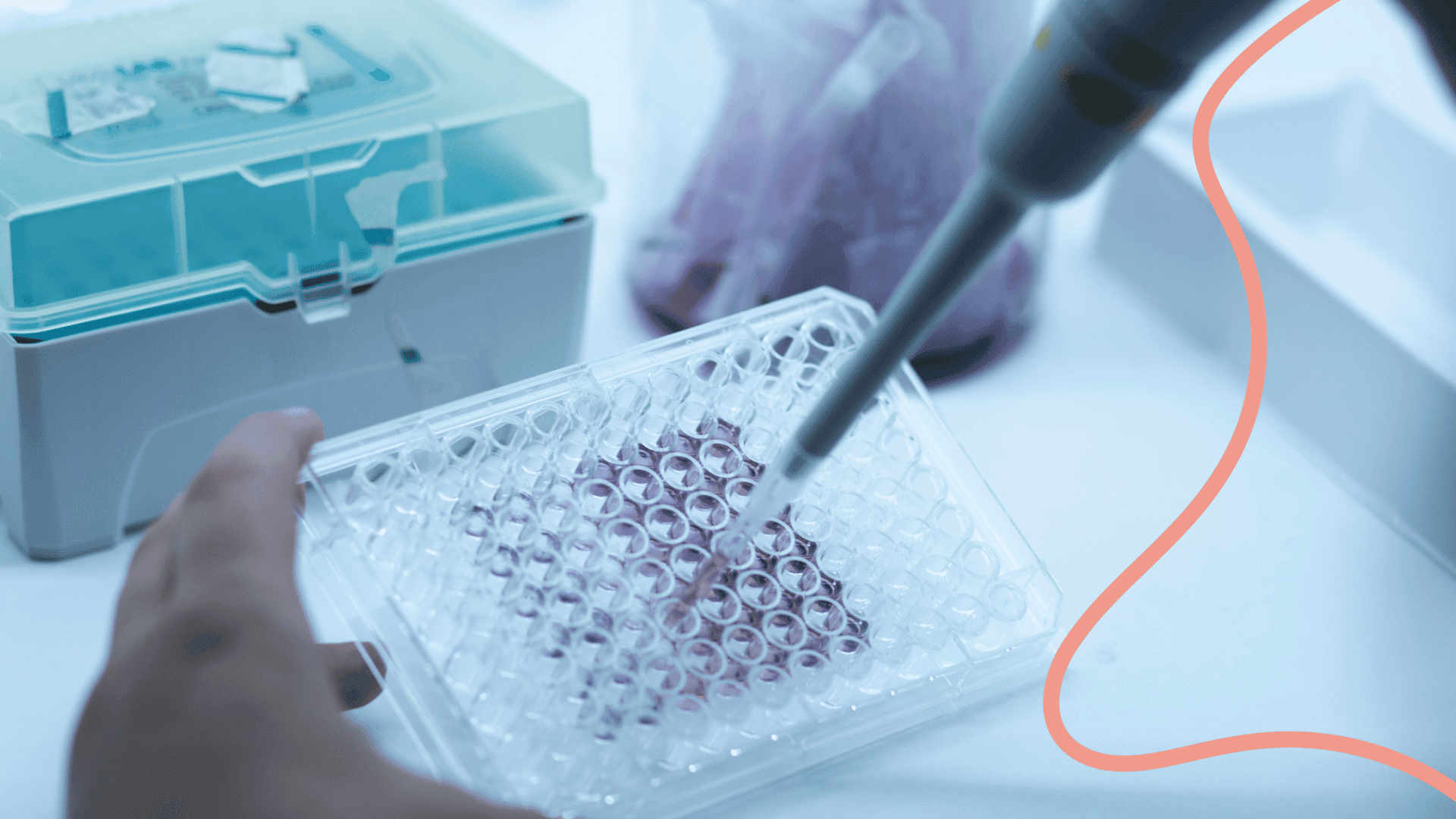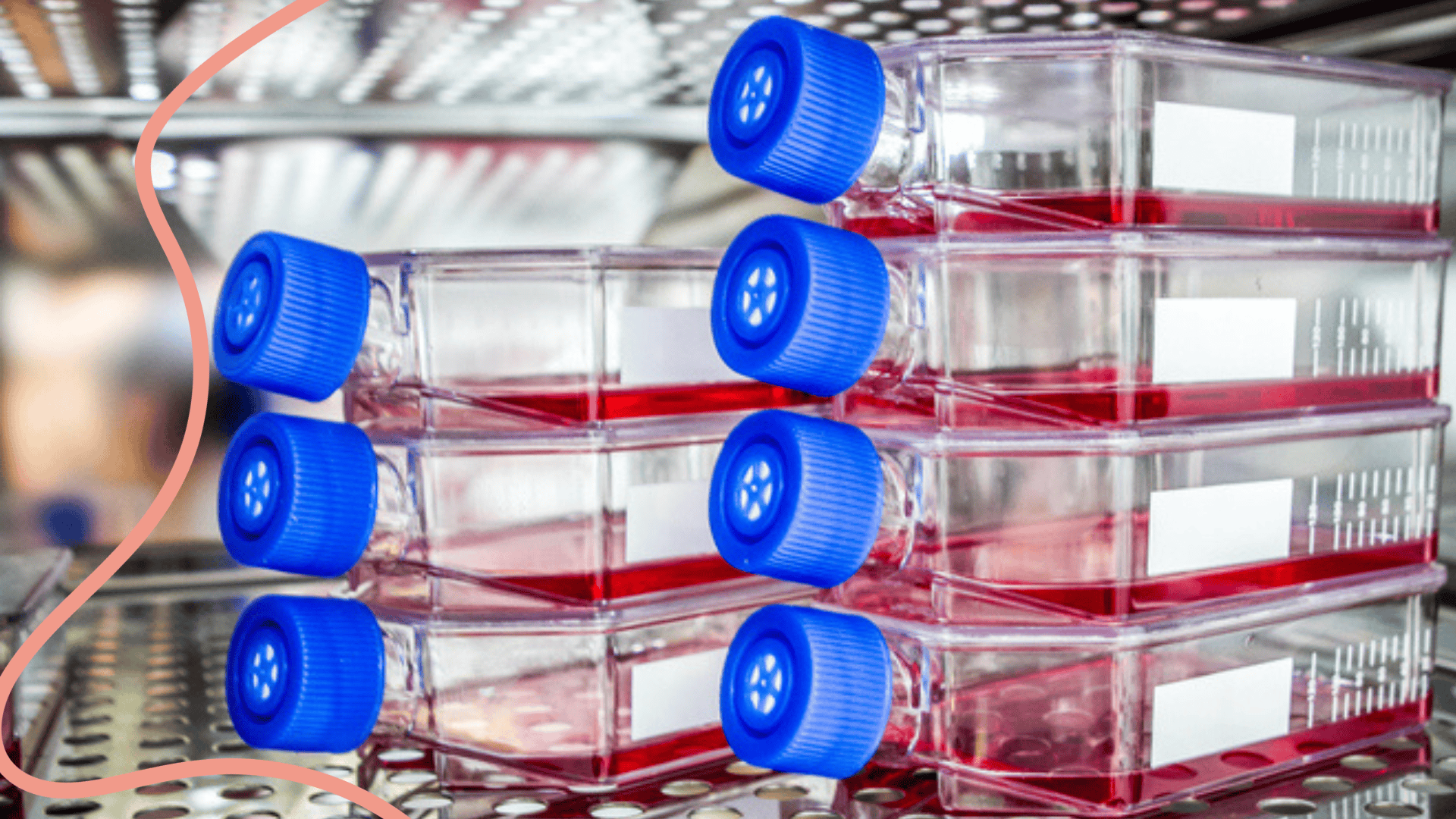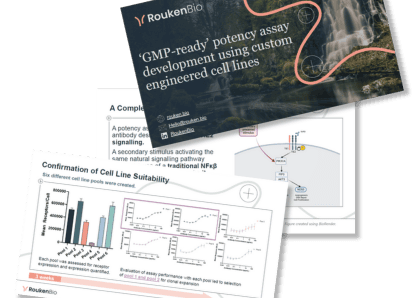Cells as Substrates for Potency Assays: A Critical Tool in Biopharmaceutical Development
Our experts explore key factors in cell substrate selection and cell banking considerations to help establish robust potency assays.

|
May 20, 2025
|
10 min read
Potency assays rely on cells as their foundation, acting as essential tools for measuring biological activity and ensuring therapeutic efficacy. The choice of an appropriate cell substrate is crucial, as it directly impacts assay relevance, reproducibility, and overall performance. Despite the abundance of available resources and regulatory guidance, selecting the right cell can be a complex process, particularly when starting from scratch. This blog will explore key factors in cell substrate selection and cell banking considerations to help establish robust potency assays.

Choosing the Right Cell Substrate for Potency Assays
The first key step in the selection process is identifying a cell substrate that not only aligns with the Mechanism of Action (MoA) but can also demonstrate the desired biological responses. This choice is guided by factors such as receptor expression, downstream signalling pathways, and measurable functional outcomes (for example cytokine release, cell proliferation, or target cell lysis). This involves thorough research, including reviewing the available literature and leveraging previous experience within the organisation.
When potential cell substrates are identified, several key considerations must guide a further selection process to ensure the potency assay is robust, reproducible, and fit for purpose:
- Relevance to the Mechanism of Action: The chosen cell substrate must express the appropriate receptors and signalling pathways that mirror the biological effects intended by the drug.
- Sensitivity and Dynamic Range: It's crucial that the cell substrate is sensitive enough to detect potency differences within an appropriate dose-response range, while minimising background noise that could obscure meaningful results.
- Reproducibility and Stability: The selected cell line should consistently exhibit predictable responses across multiple assay runs. Additionally, the cells must maintain stable phenotypic and functional characteristics over time.
- Growth and Culture Conditions: Practical factors, including ease of culture, scalability, population doubling time, and susceptibility to external variables, must be considered to ensure the cell substrate can be reliably maintained in the lab.
- Regulatory Acceptance: The chosen cell line must meet regulatory expectations for use in potency assays. This includes demonstrating consistent performance, biological relevance to the product’s MoA, stability over time, and compatibility with assay validation and routine use in GMP environments.
- Source and Availability: The availability of the cell line, whether commercially accessible, requiring licensing, or needing to be sourced from primary tissues can have a significant impact on long-term feasibility and continuity of the assay.
By thoughtfully considering each of these factors, bioassay scientists can make an informed choice when selecting the right cell substrate for their potency assays, ultimately ensuring the reliability and success of their testing strategy.
Primary Cells: Highly Relevant but Challenging
Primary cells are the gold standard when it comes to replicating in vivo conditions, making them the first choice for assay purposes where biological relevance is critical. However, they are often seen as a "last resort" for potency assay developers due to their considerable challenges. Derived from patient or donor sources, primary cells maintain a high degree of physiological relevance, offering accurate representation of surface antigens and intracellular signalling. However, they suffer from limitations in terms of availability, lifespan, and heterogeneity. The key challenge with primary cells is that they often require repeated collections from donors and require substantial preparation, which introduces variability, especially in assays requiring consistent cell performance over multiple runs like potency assays.
For example, peripheral blood mononuclear cells (PBMCs) are a common primary cell type used in assays, particularly when studying drugs like T-cell engagers (TCEs), which recruit T-cells to target cells. While these cells are relevant for assessing TCE potency, the heterogeneity within PBMC populations can lead to variability in assay responses across donors. Additionally, their lifespan outside the body is limited, T-cells might last for a week under proper stimulation, while other cells like neutrophils or monocytes last less than a few days.
To mitigate these challenges, careful cell isolation methods and post-isolation phenotypic validation can improve consistency, but there's still a need for optimisation of protocols and constant monitoring of viability. In the context of our experience, primary cells are used sparingly, typically in specialised assays or for very specific biological relevance that cannot be achieved with other cell substrates. The potential to bank these cells for long-term use is actively being researched, though this remains a developing area.

Immortalised Cells: Consistency with Trade-offs in Relevance
Immortalised cells are often the go-to choice for potency assays, especially in routine or large-scale settings, thanks to their ability to proliferate indefinitely and provide a consistent source of material. These cells are modified to bypass natural senescence and grow without limit, which is a significant advantage for ensuring assay reproducibility and scalability. However, while immortalised cells offer reliable performance and easy availability, they come with their own set of challenges, chiefly, they may have less physiological relevance. Genetic alterations required to induce immortality can lead to chromosomal aberrations, and these cells may no longer fully reflect the complexity of the tissue they originated from.
Despite these shortcomings, immortalised cells remain central in potency assays due to their cost-effectiveness and stability. For example, SK-BR-3 cells, often used in assays for breast cancer drugs targeting Her2 receptors, can offer reliable potency measurements, but due to their chromosomal characteristics can exhibit variability in drug response over time or between passages, complicating assay interpretation.
If you're working with immortalised cells, one way to reduce variability is by using well-characterised cell lines that have a history of consistent performance in assays. Moreover, optimising growth conditions, ensuring cell synchronisation, and paying close attention to culture protocols can help maintain more consistent performance in your assays. The widespread use of immortalised cells reflects their suitability for many potency assays, but their fixed phenotype and functional characteristics can mean that engineered models are needed to capture key aspects of drug activity for complex MoAs.
Engineered Cells: Customisation for Precision and Flexibility
Engineered cells offer flexible and powerful solutions for potency assays, especially when working with complex MoAs such as bispecific antibodies. These cells can be customised to express specific receptors, pathways, or reporter constructs, enabling a more nuanced approach to assessing drug potency, particularly when measuring multiple MoAs in a single assay. This is a distinct advantage when dealing with bispecifics, which may require assessing multiple interactions within the same cellular environment, something that’s typically not possible with immortalised cells.
The main challenge with engineered cells lies in ensuring stable and reproducible expression of the introduced genetic material. Unlike primary or immortalised cells, engineered cells often require careful optimisation of gene delivery techniques and consistent monitoring of gene expression levels over time. While the ability to tailor these cells to reflect specific MoAs is invaluable, it’s also vital to acknowledge the potential for gene silencing, which can lead to reduced assay reliability over successive passages. Addressing this issue often requires advanced techniques, such as CRISPR/Cas9-based genome editing and incorporating stabilising elements like insulator sequences flanking the transgene.
The increasing use of engineered cells for assessing complex MoAs reflects their growing importance in the potency assay space. For instance, bispecifics and other next-generation biologics benefit from engineered cells that can mimic multiple, concurrent interactions, ensuring more robust and comprehensive assay data.
Cell Banking and Characterisation: Building a Reliable Foundation for Potency Assays
When it comes to potency assays, the cells you choose are not just a background detail, they’re one of the most critical “reagents” in your experiment. Whether you're using primary, immortalised, or engineered cells, there are practical considerations that remain constant across the board. The goal, if possible, is to establish a consistent, well-characterised cell bank that can serve as a reliable foundation for every assay you run.
One of the first steps is setting up your cell banks. Most labs use a tiered approach by creating a Master Cell Bank (MCB) as the primary bank and then generate a Working Cell Bank (WCB) for routine assay work. To streamline assay readiness and reduce culture variability even further, some labs establish a "thaw-and-use" bank from the WCB cells that are pre-qualified, cryopreserved, and ready for immediate use after thawing, eliminating the need for extended recovery or expansion steps. This not only helps maintain consistency over time but also minimises variability between assay runs.
A key part of managing your cell banks is characterisation, which acts as a de-risking strategy for your assays. Once your cell bank is established, you’ll want to assess several parameters that directly impact performance. This means checking that your cells are mycoplasma-free, sterile, and that they perform as expected in your assay. For engineered cells, for example, it can be useful to confirm that the engineered proteins are present and functional. A risk-based approach here means tailoring the extent of characterisation to the source and intended use of the cells. For lower-risk cells, basic checks on viability and responsiveness may be sufficient. For higher-risk cells, or in later stages of development, additional tests, like identity verification, species confirmation, and some level of adventitious agent screening, can be invaluable. This not only helps catch issues early but also provides a baseline reference to troubleshoot potential assay drift later on.

The practical details of handling cells also play a crucial role. Culturing your cells under standardised conditions, including defined media compositions, culture routines, and seeding densities, ensures that they aren’t stressed, overcrowded, or starved prior to banking. When it comes to freezing your cell banks, don’t overlook the importance of optimising your freezing medium. Constituents such as FBS and DMSO can affect cell viability, so it’s essential to fine-tune these conditions for the cell type you’re working with. And on a more practical note, make sure your labels are resistant to liquid nitrogen and ethanol to safeguard your inventory. It’s also important to be aware of any specific requirements from receiving labs, which might add another layer of practical considerations for cell bank preparation.
Documentation is the backbone of the entire process. Keeping detailed records of how your cell banks were prepared, the specific culture conditions used, and the outcomes of your characterisation tests is critical. This ensures that future cell banks are prepared in the same way and characterised with the same rigor, which is key for maintaining consistency and meeting any regulatory requirements that might arise. Guidelines such as USP <1032> provides valuable insights into best practices for assay design, cell line qualification, and cell bank management to ensure data quality and product consistency.
In summary, by focusing on establishing well-documented cell banks, rigorously characterising your cells in a risk-based manner, and adhering to standardised culture and documentation practices, you can significantly enhance the reliability and consistency of your potency assays.
Join our community of curious minds on LinkedIn
🗓️ Stay informed with our monthly scientific newsletter, published on LinkedIn on the last Wednesday of each month.
These editions bring you the latest in drug development breakthroughs, industry trends, and expert insights from the brilliant minds at RoukenBio.
Subscribe today on LinkedInPartner with RoukenBio for GMP-ready potency assay development
Overcome assay development challenges easily with our seamlessly integrated approach. See how a complex problem can be solved in potency assay development using custom engineered cell lines in our technical slides.
Access the presentation

